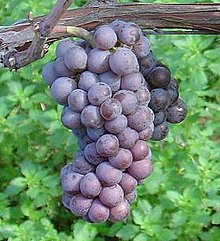
The International Grape Genomics Program (IGGP) is a collaborative genome project dedicated to determining the genome sequence of the grapevine Vitis vinifera. It is a multinational project involving research centers in Australia, Canada, Chile, France, Germany, Italy, South Africa, Spain, and the United States.
The project was established on the premise that whereas the Vitis family provides the world's most economically important fruit, its biology is still poorly understood. Many centuries of viticulture have provided many well-informed wine-producing centres throughout the world, yet exactly how a grapevine plant responds and interacts with the physical environment and deals with abiotic stresses, pests and diseases is currently unknown.
Agricultural technology surrounding Vitis has been traditionally based upon specific genotypes, which in the main have relied on "vegetative multiplication" and control of growing conditions to improve quality and yield. While advances in quality have certainly been achieved, it has involved increased costs and is in danger of incurring unsustainable environmental overheads. The argument is that the relatively unknown biology of Vitis is capable of delivering desired viticultural improvements without the associated ongoing costs, and establishing its genome sequence will examine the role individual genes play in viticulture, improving grape characteristics and quality in a predictable way.[1]